A well-designed flower planter can add color and elegance to your front porch or patio and elevate your home’s curb appeal. But how exactly do you design a professional-looking container garden? And, after you’ve potted up your flowers, how do you make sure they look their best throughout the growing season?
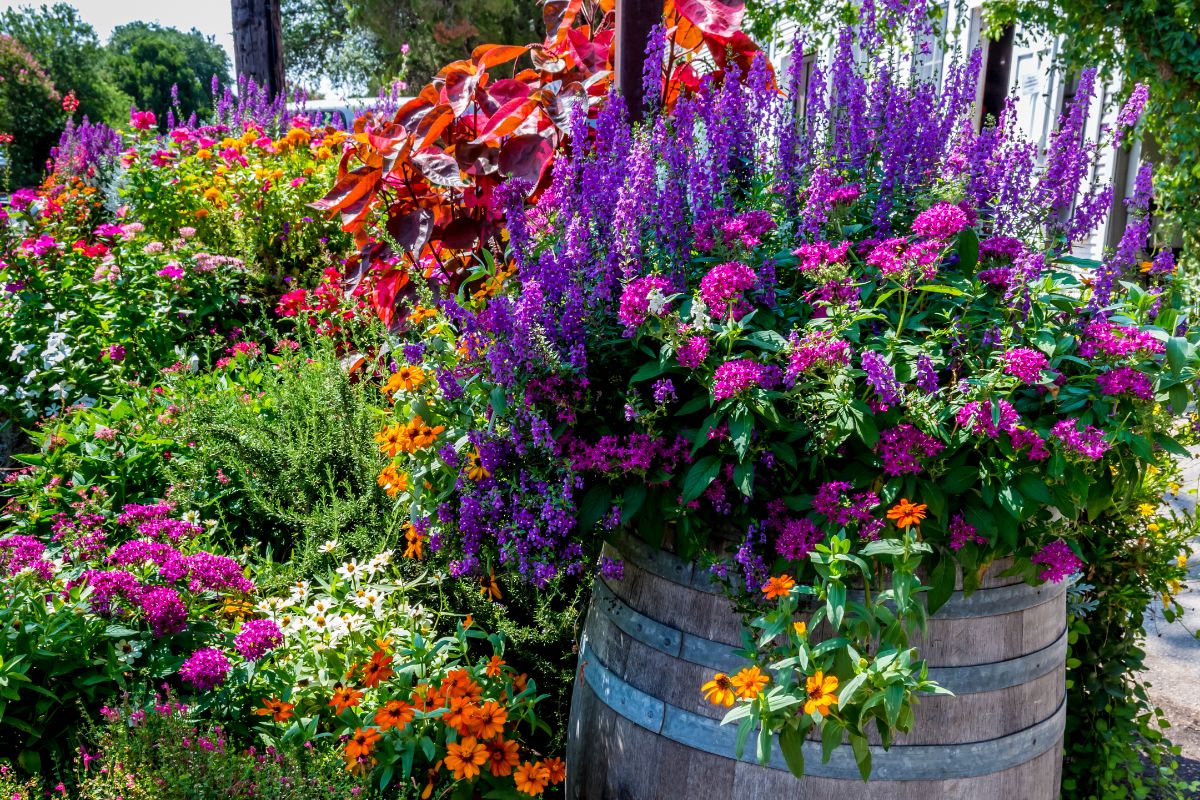
Container gardening is an art form in its own right, and there are a number of planting techniques and style suggestions that you can use to design your own container garden. To get you started, we’ve compiled this list of the top 10 design tips that we find useful for crafting a complex yet refined flower planter. Use these tips when planting your own container garden to create a planting design that can rival anything you’d find in a gardening magazine!
Jump to:
- 10 tips for creating beautiful planters and container gardens
- 1. Choose the right pot.
- 2. Use a quality potting mix.
- 3. Plan out your planter.
- 4. Grow plants with different heights.
- 5. Experiment with color.
- 6. Use interesting textures.
- 7. Don’t forget to water.
- 8. Add fertilizer.
- 9. Keep up with maintenance.
- 10. Swap out seasonals.
- Frequently asked questions
- Summary
10 tips for creating beautiful planters and container gardens
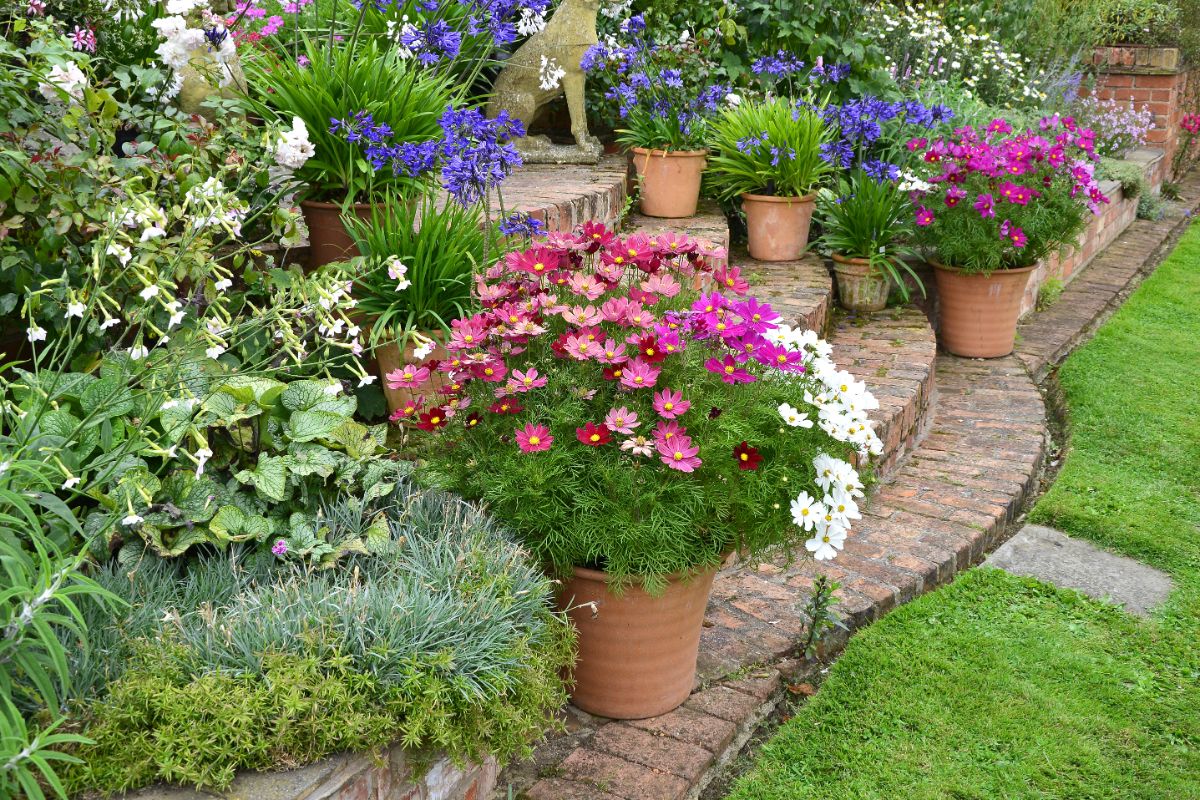
There’s no single way to create an effective porch planter or patio container garden, but there are some tried and true techniques that will make your design look more finished. Try out some or all of the tips below when sowing your plants to form a miniature flower garden with different colors, textures, and bloom times.
1. Choose the right pot.
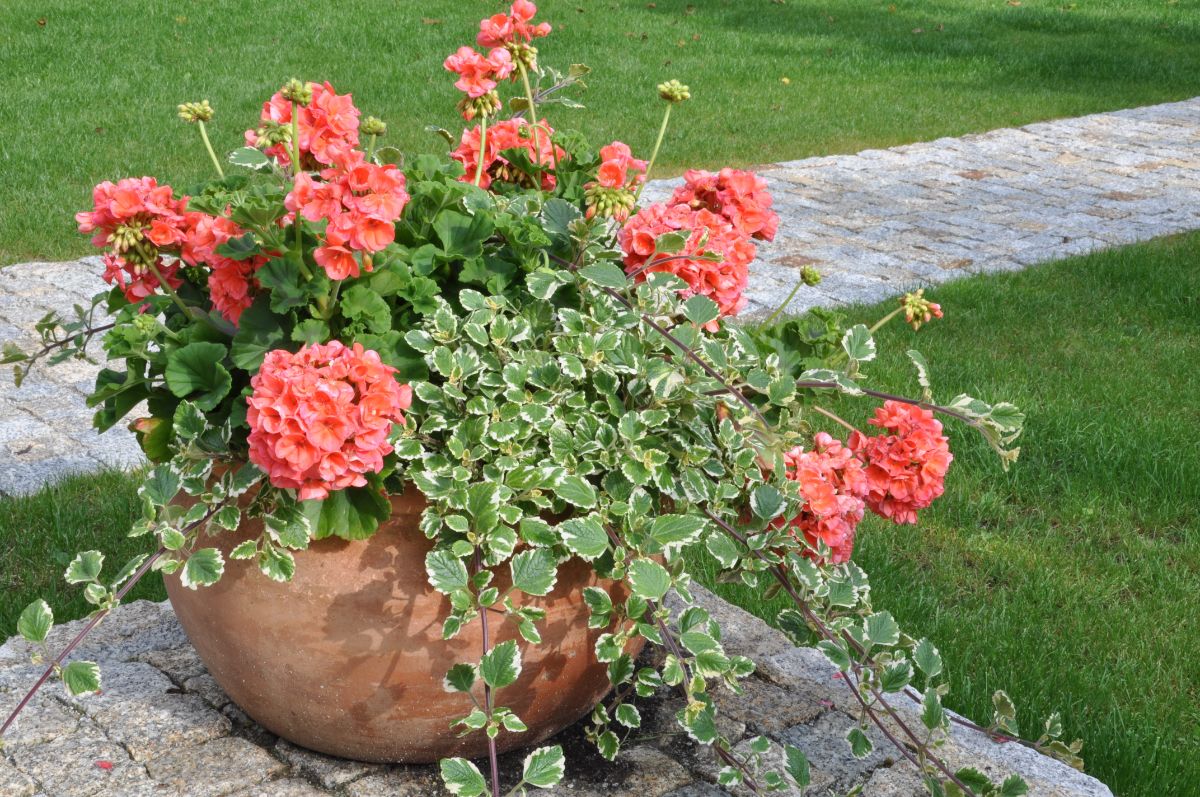
Before you can start planting a single flower, you’ll need to pick the appropriate pot for your container garden. Terracotta pots are popular choices since they are easy to find and they come in many different sizes, but you can also get more creative with your container planters. Just make sure that whatever container you use to grow plants has plenty of drainage holes to prevent waterlogged soil and potential root rot.
Today, there are tons of different porch and patio planters to choose from, including planters made of plastic, resin, concrete, ceramic, wood, and upcycled materials. If you prefer contemporary or minimalistic looks, concrete planters can be a great choice, while cottage gardeners may prefer more traditional containers, like wood barrel planters or planters with lattice designs. You can also use antique planters or found objects like old tires, bathtubs, baskets, wheelbarrows, or galvanized steel tubs.
One thing to keep in mind when choosing containers for your plants is whether or not you intend to grow edible crops in your container garden. While materials like rubber tires are okay to use with ornamental plants, they aren’t safe to keep edible herbs and veggies in. You can also make smart use of vertical space by selecting hanging planters, window boxes, or planters that fit right over porch railings and bannisters!
Another option to consider is the self-watering planter. While these planters aren’t for everyone, and they can be a bit pricy, they are particularly useful for frequent travelers or anyone who often forgets to water their plants. Many self-watering planters have deep water reservoirs, which can hold a lot of water and drastically cut down on the number of times you’ll need to water your plants.
2. Use a quality potting mix.
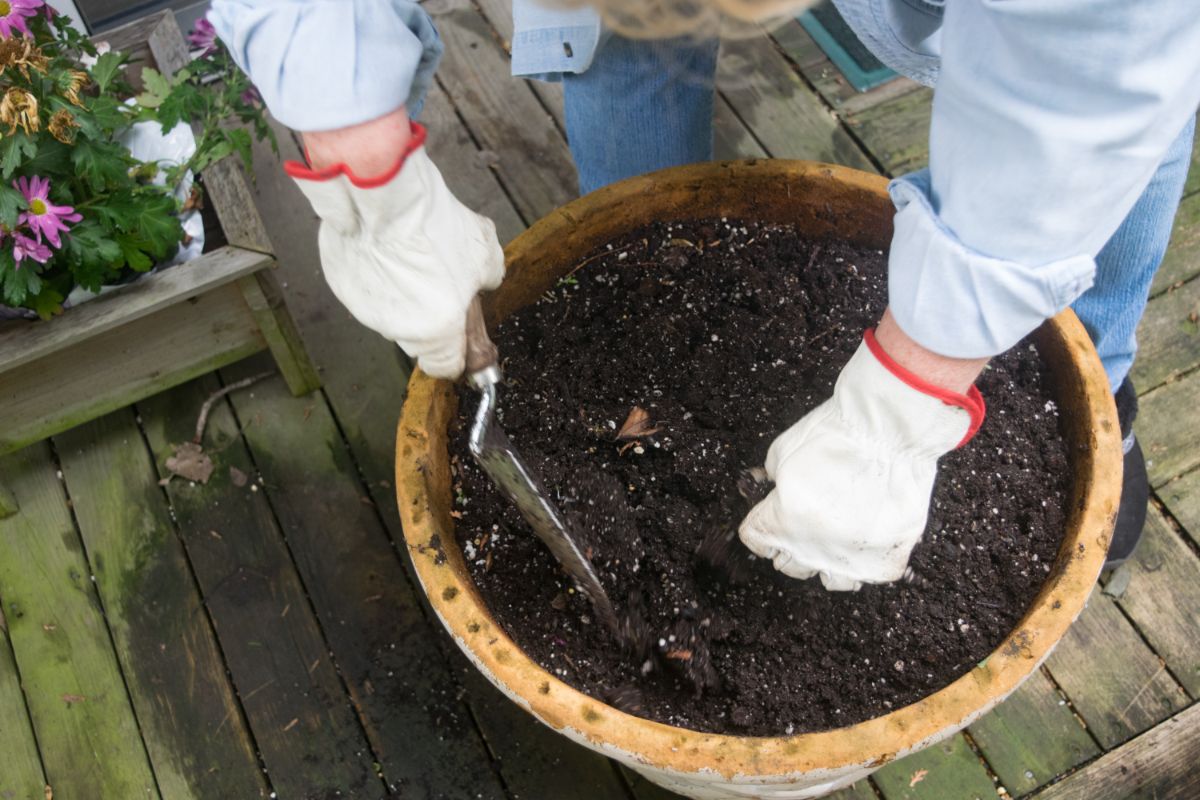
Although garden soil works well for inground gardens, it isn’t a good choice for container gardens. If you scoop up the soil right from your backyard and use it to fill up your planters, it will usually become very compact, and it won’t drain properly. Over time, garden soil in containers can slow down the growth of plant roots and impede water flow, increasing the chances that root rot will develop.
To avoid these issues, always start your container garden off with a good quality potting mix or soil intended for raised bed gardening. These substrates have added ingredients that increase airflow and water drainage around plant roots while also locking in moisture so plants won’t dry out as quickly.
If you want to improve the growth of your plants even more, consider amending your potting soil with compost, worm castings, or aged manure before planting your flowers. You can use bagged compost for this or make your own compost using outdoor or indoor composting methods. When added to potting soil, compost, and aged manure act as a slow-release fertilizer, and they also help new plants settle in more quickly by offering them the nutrients they need to grow properly.
3. Plan out your planter.
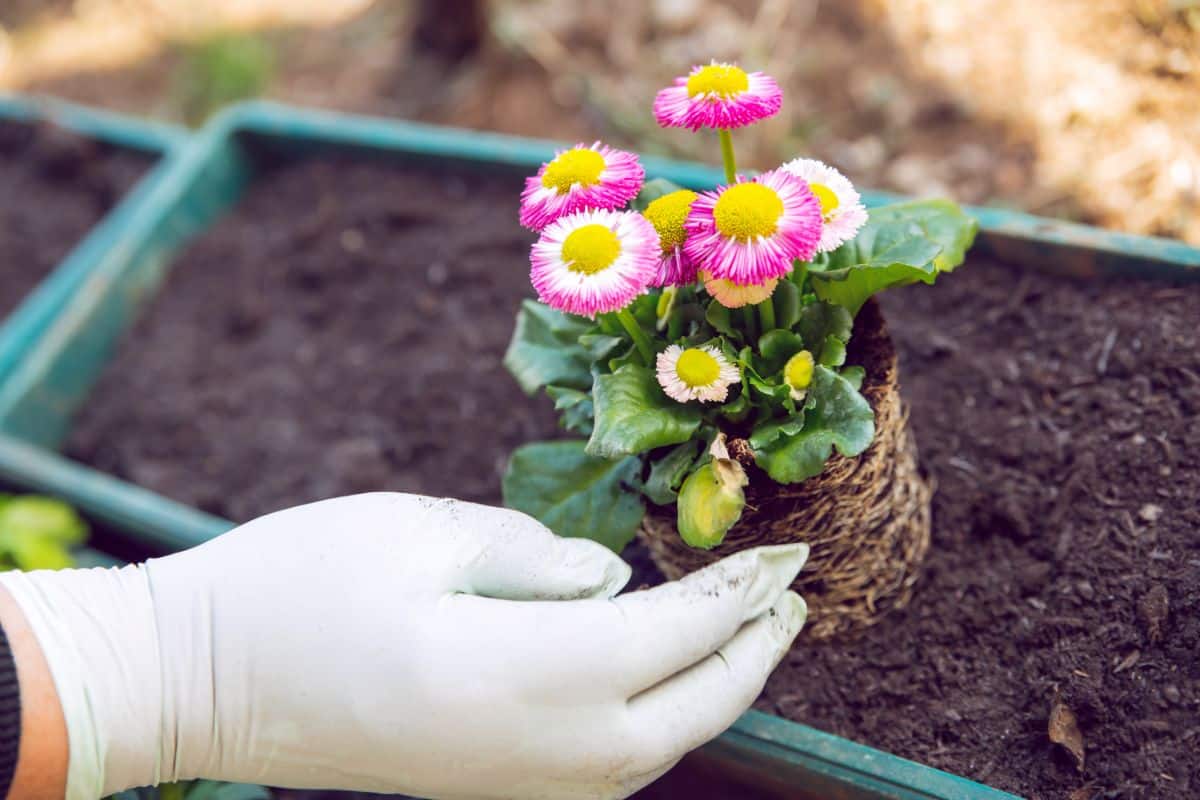
While you may be tempted to rush right out to the plant nursery and grab the most colorful plants you can find for your container garden, it’s usually a good idea to do a bit of planning before planting. You may want to look at Pinterest boards for inspiration or bring out a blank piece of paper and a pencil and start sketching out your own designs. Having a basic plan for your container garden can help you select the right plants, and it will also give you an idea of what to look for when you go to the garden center.
When planning your container garden, consider what plants you like, but also think about what plants will thrive in your particular growing zone. Also, keep in mind that some plants need more shade or sun than others, so if you plan to keep your planter under a shady porch roof, you may want to look for plants that can grow in part to full shade. You may also want to purchase only annual plants, which can be swapped out every year, or you may want to grow perennials that can come back again and again, although they may need some winter protection.
Because plants have different flowering times, consider growing plants that will bloom at different times of the year to keep your container garden colorful from spring through fall. Crocuses and tulips, for instance, bloom in spring, while foliage plants like caladiums and coleus can be enjoyed all season long.
4. Grow plants with different heights.
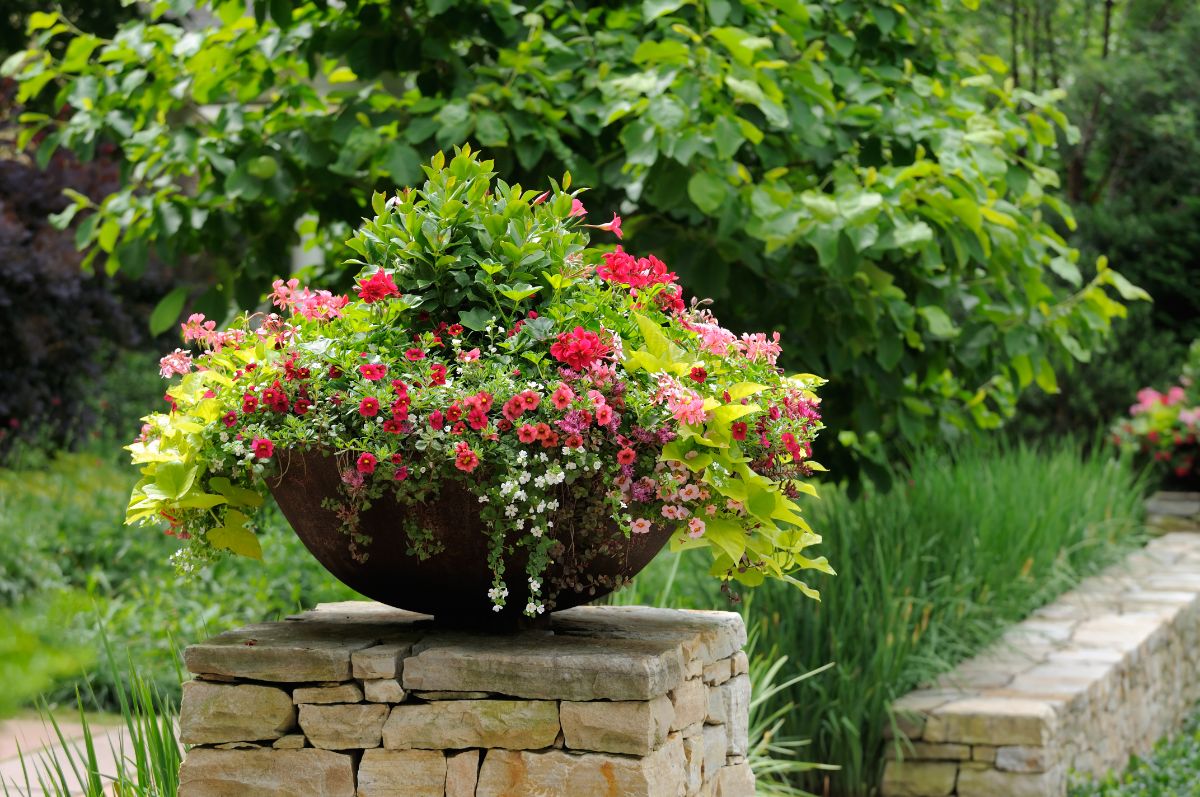
One of the most classic ways to add complexity and depth to your container garden is to grow plants in layers. Combining plants of different heights can create a more structured look, and it gives you more room to play around with the shapes and colors of your plant selections.
Container garden plants are often lumped into one of three categories: thrillers, fillers, and spillers. Using all three types of plants in a planter is an easy way to layer your design, and it makes smart use of space too.
Thriller plants are the showstoppers of container gardens, and they are usually the tallest plants in your arrangement. Beyond adding vertical interest, thriller plants form the background of planter designs, and they are often the most colorful and flashy plants. Both foliage and flowering plants can be considered thrillers, with caladiums, sunflowers, and ornamental grasses being some of the most popular choices.
Filler plants are exactly what they sound like: they fill up empty space in container gardens and cover up the bare soil. Filler plants are usually shorter than thrillers, and they often complement the colors of thriller plants. Fillers, like petunias and pansies, are common choices, and their mounding growth habit stacks neatly underneath taller thriller plants.
Spiller plants are the final type of plant to add to containers, but they can sometimes be the most interesting plants in a design. Spillers are often vining or trailing plants that cascade gently over pot margins and help tie planters in with the environment around them. Sweet potato vines, sweet alyssum, and ivy are commonly used as spillers, and their neat lines and colorful accents always add charm and interest to container gardens.
5. Experiment with color.
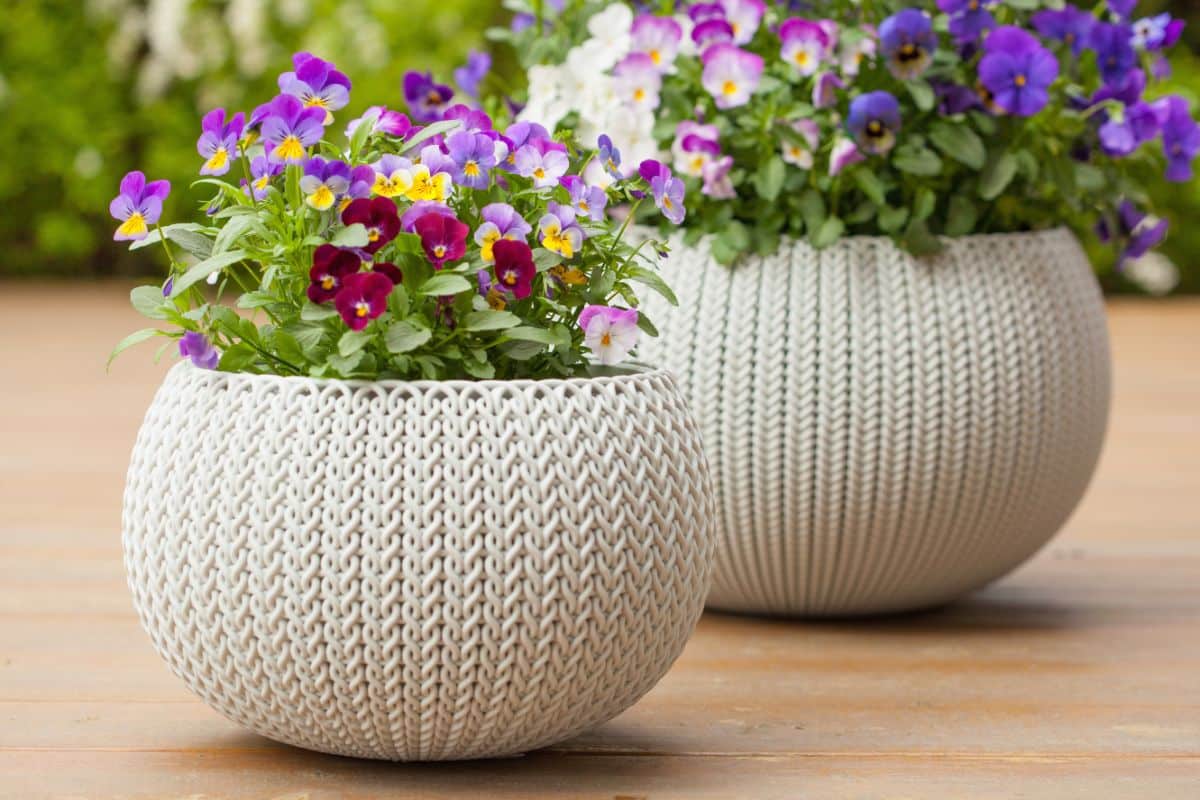
One of the simplest ways to make your container garden look intentional is to color-coordinate your plantings. You can use the colors on your home, such as the color of your shutters, to influence your plant choices, or you can draw inspiration from the plants that are already growing in your garden. If you want to create a very personalized planter design, you can also select plants that bloom in your favorite colors!
When playing with color, you can choose plants that are all a single shade, or you can select plants in complementary colors to really make your planter pop! If you’re new to working with color, you may want to familiarize yourself with the color wheel, which will help you select plants that coordinate well together. This website has an interactive color wheel that will give you color suggestions and help you choose up to 4 coordinating colors to include in your flower planter arrangement.
6. Use interesting textures.
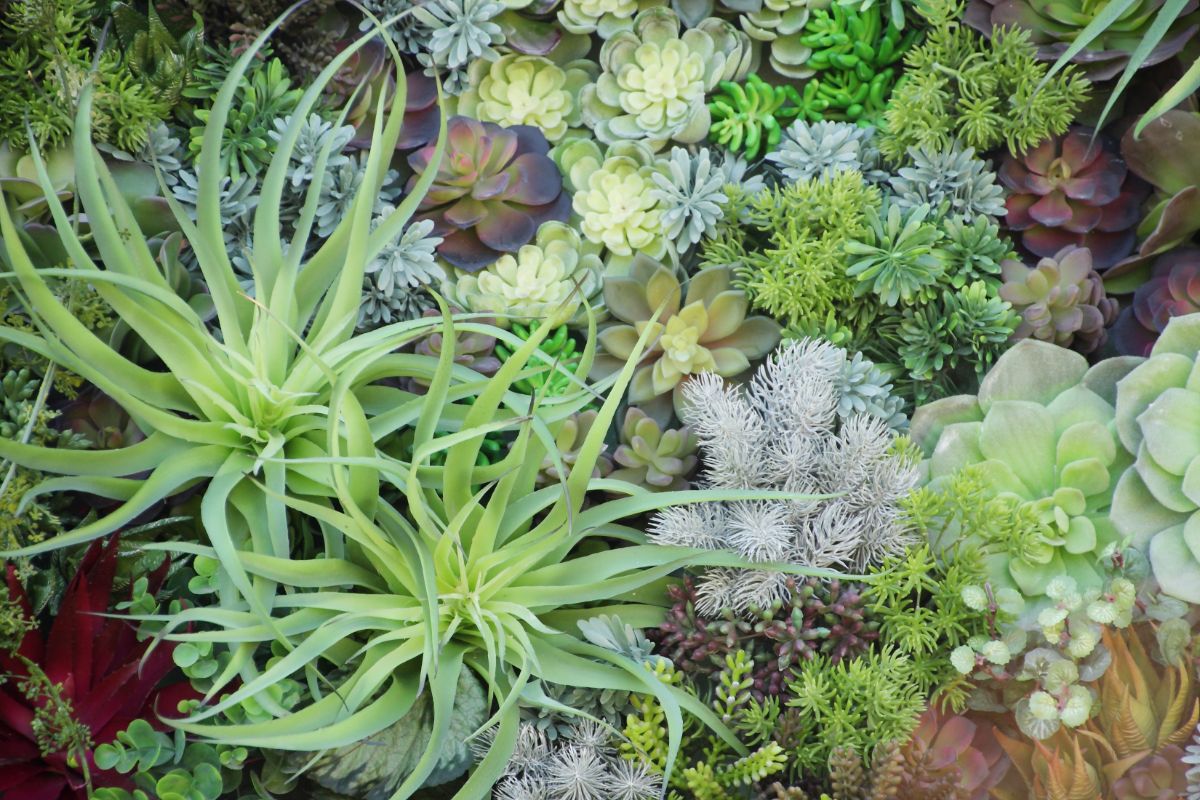
When you combine colors in your planter, you make a complex design that will draw the eye in. But another way to elevate the look of your container garden is to use different plant textures in your arrangement.
Some plants like caladiums and elephant ears have large, smooth leaves that make a big impact, while other plants like yarrow or fennel have feathery leaves that lend an airy quality to containers. You can also try out other plants with distinct silhouettes, such as the spiky lines of dracaena or the smooth shapes of calla lilies.
7. Don’t forget to water.
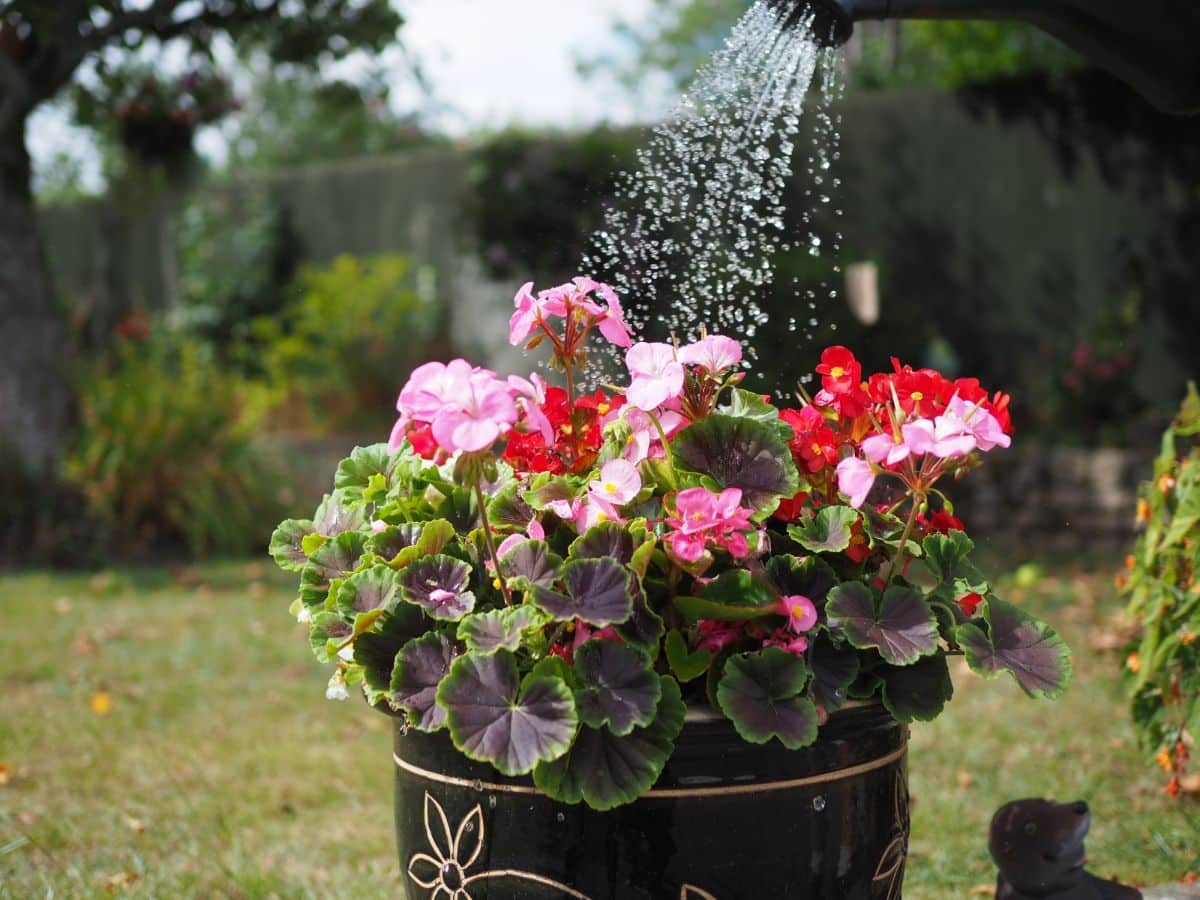
The hardest part about growing flower planters is choosing the right plants to keep in your arrangement. But after you’ve situated your plant selections in your container garden, your work isn’t done just yet! Like other plants, container flowers will need proper care and maintenance throughout the season, and they should be watered regularly too.
How often your container garden will need to be watered will depend on the type of potting mix you used, the size of your planters, and the types of plants you’re growing. Be sure to research the needs of your individual plants to determine exactly how much water they will need. Selecting plants that have similar watering needs will streamline your watering regimen as well.
As a general rule of thumb, most plants need about 1” of water per week; however, plants like lavender need less water, and petunias and other moisture lovers may need more. Checking your potting mix from time to time will help you determine when it’s time to water. Usually, when the top 1 to 2” of soil feels dry, it’s time to bring out your watering can, while you’ll want to hold off on watering if the soil still feels wet.
If you don’t want to mess around with watering schedules, you can also automate your watering by installing a miniature dripline system or using self-watering planters. Using plant watering globes and spikes can also reduce how often you’ll need to water.
8. Add fertilizer.
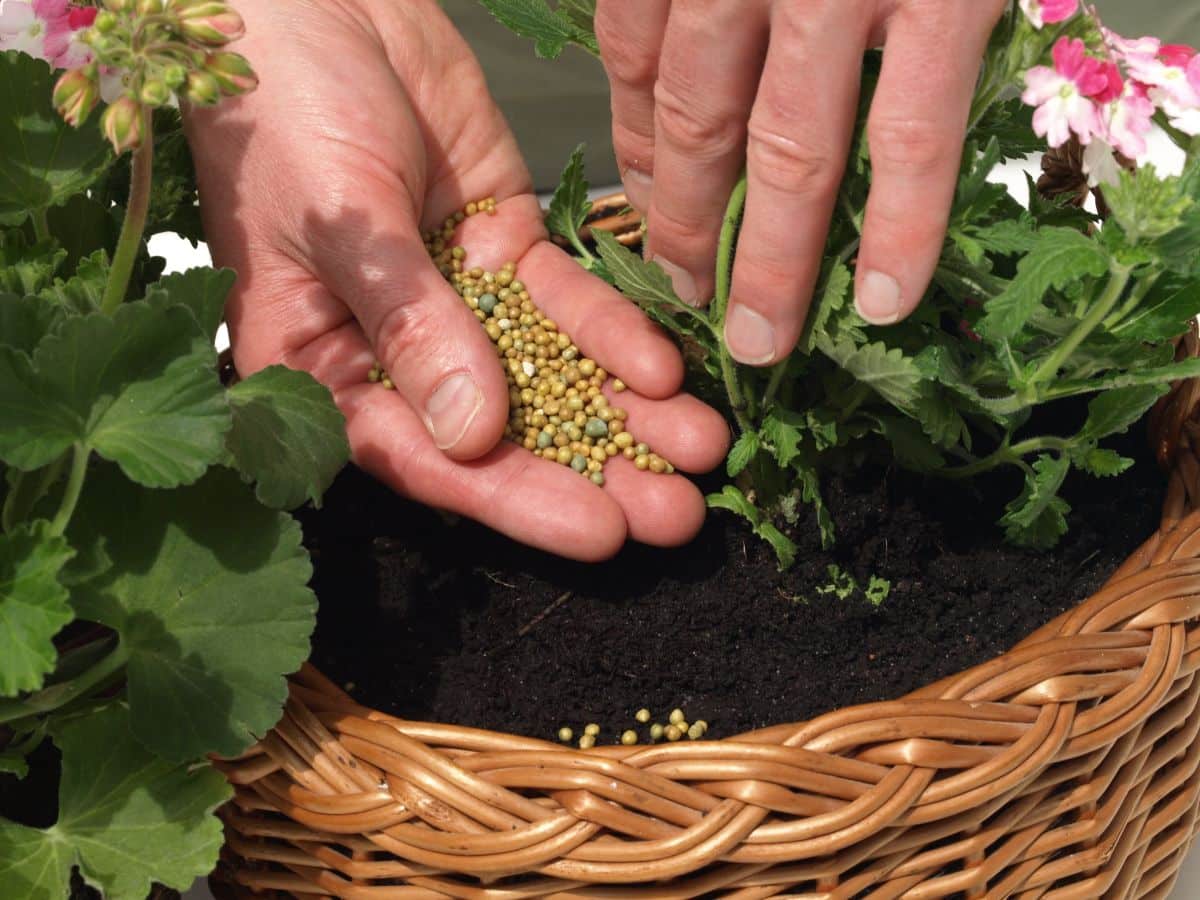
Enriching your potting mix with compost before planting your flowers can improve your soil quality and provide your plants with a slow-release fertilizer to support their leaf and flower development. But if you want your container garden to grow even better, it’s a good idea to follow up with a regular application of fertilizer.
Both granular and liquid fertilizers can be used in container gardens, but liquid fertilizers tend to be easier to apply, and they’re less likely to build up in your planter arrangement. Just remember that liquid fertilizers will need to be applied more often than granular fertilizers as they more readily wash out of the soil.
How much fertilizer your plants will need will depend on the type of plants you’re growing but, in general, you’ll want to use granular fertilizers about 2 to 3 times a year and liquid fertilizers every 2 to 4 weeks. For more exact instructions, always consult your fertilizer package for instructions on the application. Some of the best organic fertilizers to use in container gardens include kelp meal, alfalfa meal, soybean meal, and fish emulsion.
9. Keep up with maintenance.
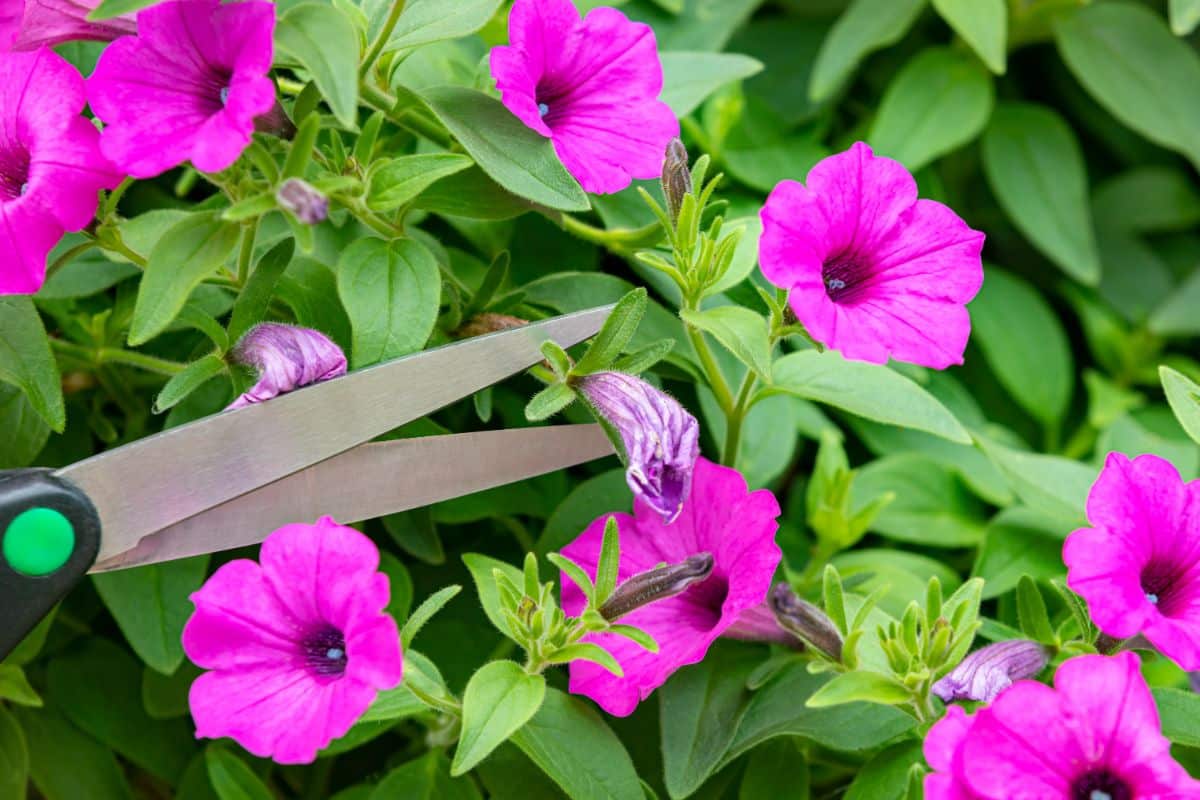
If you want to keep your container garden in tip-top shape throughout the year, you’ll need to stay on top of maintenance. That means checking your plants from time to time for pests and damage and snipping away any broken stems, old flowers, and damaged areas to maintain the look of your planter.
For best results, check your plants over about twice a week and use sterilized pruners to snip away any plant matter that doesn’t look its best. Deadheading spent blooms can also improve the look of your planter arrangement, and it encourages plants to produce more flowers. Some plants will also benefit from regular pruning, which will encourage them to grow more leaves and flowers and branch out for a fuller appearance.
10. Swap out seasonals.
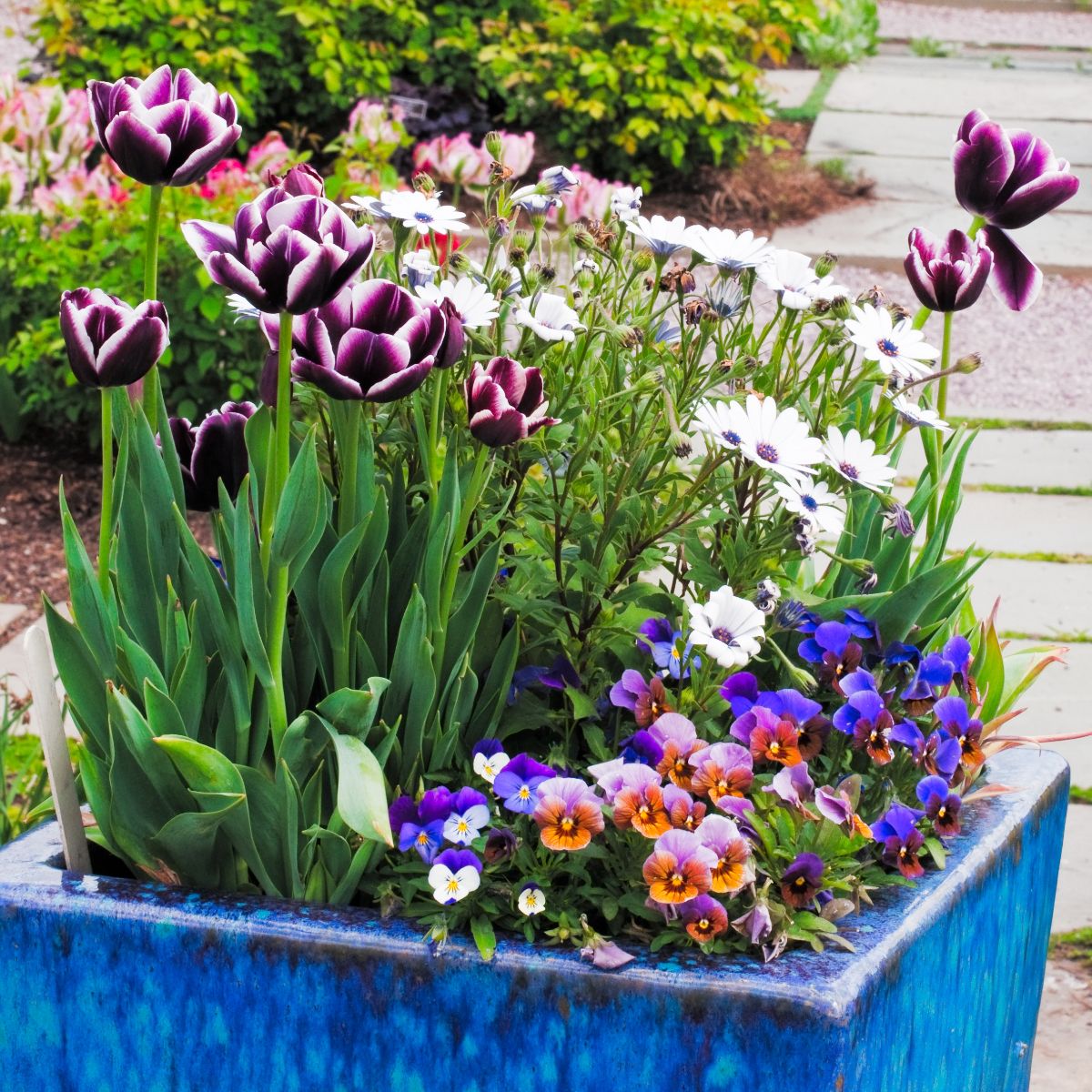
Some plants can continue to reward you with patterned leaves and colorful flowers throughout the season, but other plants only bloom for a short period of time. After their blooms fade, these plants can be enjoyed for their leaves, or you can opt to swap them out for other seasonal plants that will bloom later in the year. For instance, mums or ornamental kale and cabbages are often added to container gardens in autumn after the blooms of summer flowers die back.
If you opt to swap out your ornamentals throughout the growing season, you can reduce waste by giving your old plants away to neighbors or offering them for free on websites like Facebook marketplace. Another option is to compost old plants but don’t add any plant debris to your composter if the plant suffered from disease or pests while it was in your planter.
Plant nurseries often have a selection of ornamentals for sale throughout the growing season, which you can add to your container gardens to fill in space or replace plants that are done flowering. However, if you want to save money and have an ever larger selection of plants to choose from, you can also start your own plants from seed indoors in spring and summer and then plant them in your container garden when they start producing their first sets of true leaves.
Frequently asked questions

Ideally, nothing. While it is common practice to add stones or other materials to the bottoms of pots to improve drainage, this actually creates a false water table, and it can make the soil even less likely to drain. Instead, if your pot doesn’t have drainage holes, consider drilling your own holes with a masonry drill bit.
Cold hardy perennials can often overwinter outside in pots, especially if you relocate your container to a sheltered location like a garage or potting shed. Some cold hardy container plants include heather, hellebores, and boxwood.
Plastic and wooden containers are less likely to crack in winter than ceramic, concrete, or terracotta planters. That said, you can winterize any container by wrapping it in bubble wrap or straw and/or storing it in an outbuilding or garage.
Many popular container plants are quite cold-hardy, and they can handle a frost or two. Some good examples of frost-tolerant container flowers include pansies, violas, dianthus, snapdragons, and mums.
If an unseasonal frost is on the forecast, you can protect your container garden by moving it indoors or into a protected outbuilding or garage. If the container is too heavy to move easily, you can also shelter plants by inverting milk jugs or cardboard boxes over your flowers or by covering up your planter with plant covers or a lightweight sheet.
Your porch planter can be any height you’d like, but in general, planters that are about ⅓ the height of your door will make a nice impact. You can then sow flowers that come up about ⅔ the height of your door and still have plenty of room for a porch light to shine above your container arrangement.
Summary
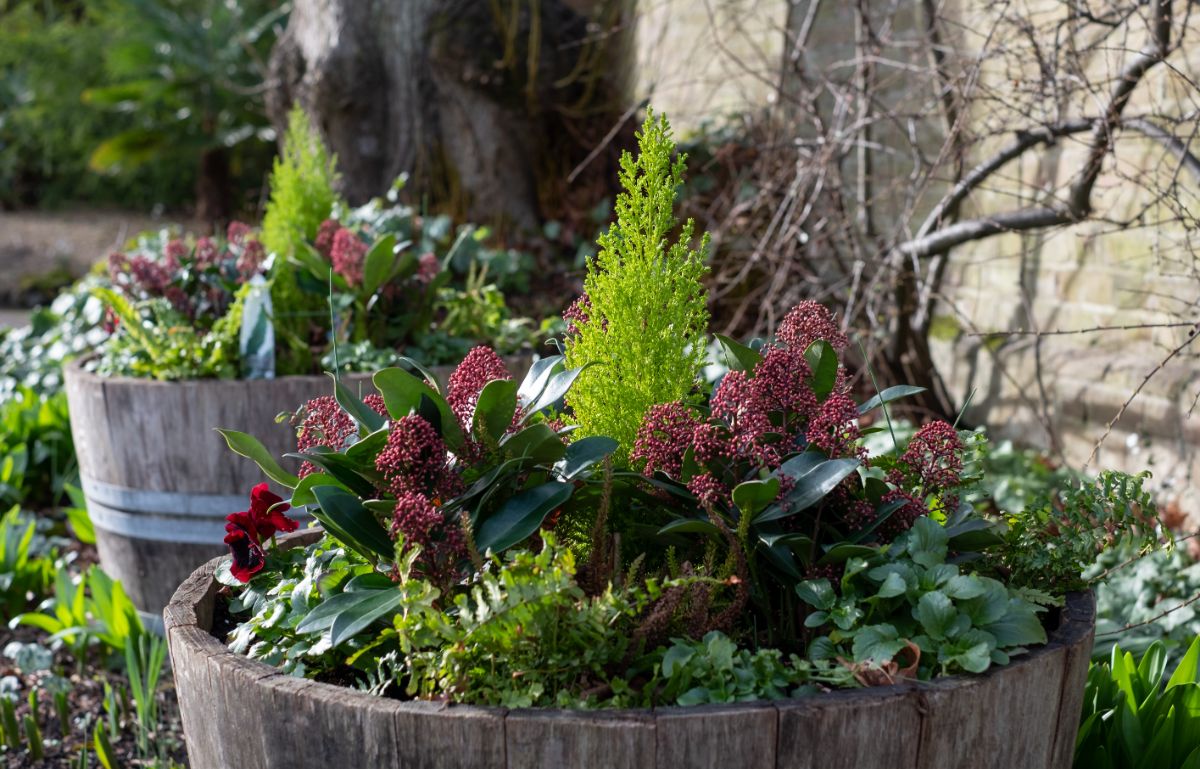
While the tips and tricks we’ve covered today can help you design your own porch planter or container garden, there’s still plenty of room to experiment with your planters to see what works best with your home. One good way to do that is to keep your plants in their nursery pots and arrange them in your planter until you find a layout that looks striking. Then, all you need to do is dig your planting holes and sow your new plants.
Container gardens can be a fun place to experiment with different planting styles and aesthetics. While ornamental planters are popular, you can also grow edible plants in your container garden or use a mix of edible herbs and ornamental flowers. You can also throw in some pollinator favorites, like fuchsia and sunflowers, to make sure hummingbirds, butterflies, and bees visit your planters too!
For more container gardening tips, check out our guide on the best vegetables to grow in containers, or learn how to grow ginger in pots right here.

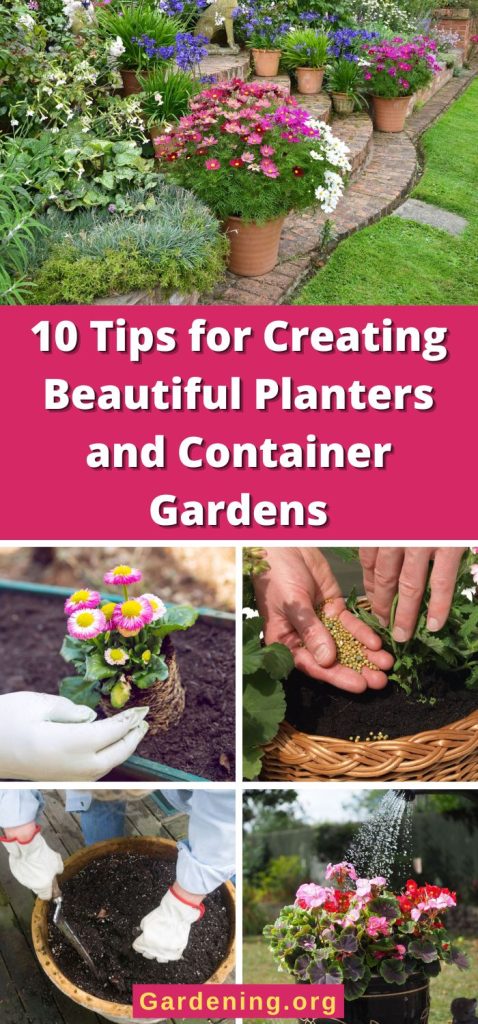

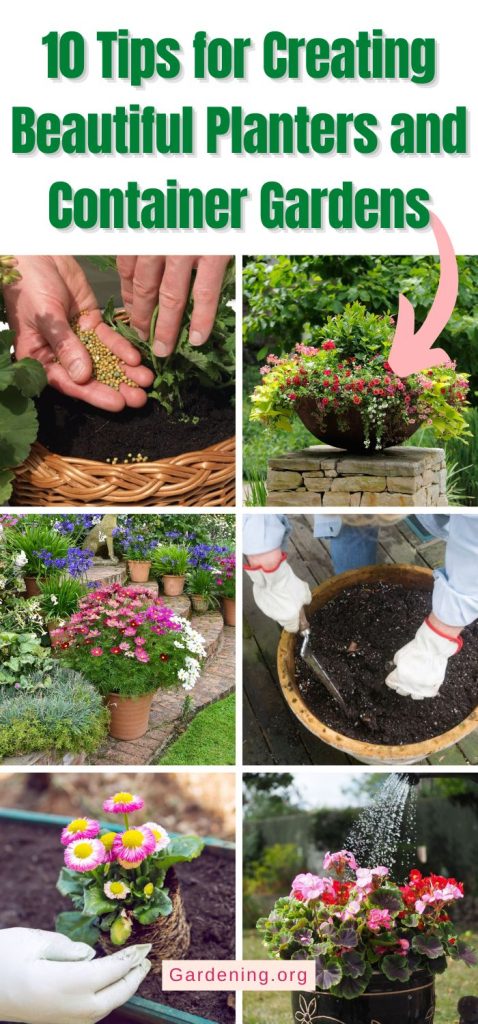
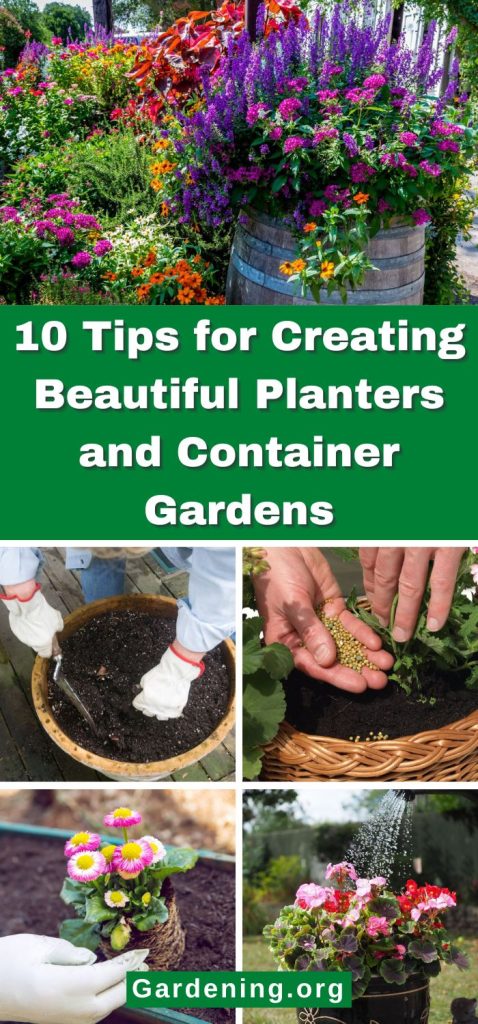
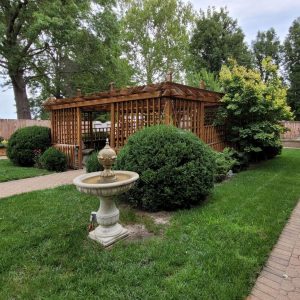
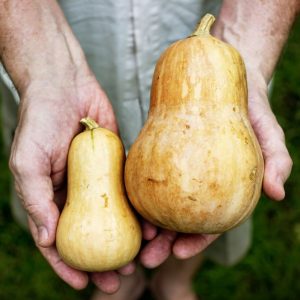
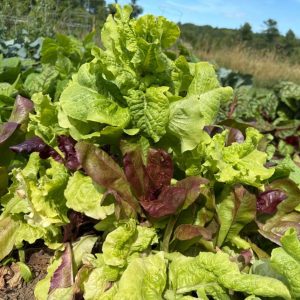

Leave a Reply